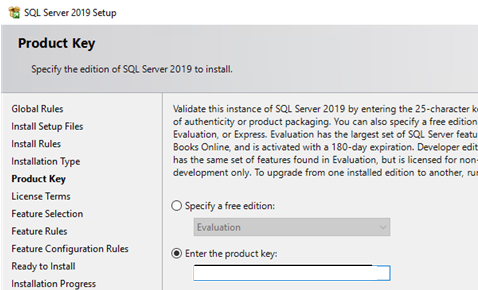

#Install sql server 2014 without domain password#
Use the username and password for the domain administrator. You would run: Add-Computer -DomainName YOURDOMAIN This can be done by using the following PowerShell command: Any public lookups would happen via referrals on the AD DNS servers.
#Install sql server 2014 without domain how to#
You did most of the network setup in the tutorial on how to create the environment within the DCD.

Clients connect to an availability group listener which determines the correct replica to send the request. Connections to the cluster are managed by WSFC. One node in a cluster will act as a primary replica with support for one to eight secondary replicas. What this means is that in the event of a failure all databases associated with a given availability group will failover to a secondary replica. These databases are known as your availability databases. The concept is very similar to Exchange's DAG technology in that an Availability Group encompasses and supports failover of a discrete set of databases. An AlwaysOn Availability Group cluster uses and requires Windows Server Failover Clustering (WSFC). One of the more exciting additions to SQL in the past few versions has been the introduction of AlwaysOn Availability Groups. We plan on covering how to setup a cluster using AlwaysOn Failover Cluster Instances, which is available for Enterprise, Business Intelligence, and Standard editions, in a later tutorial. This page breaks down the features in SQL and the edition in which they are available.įor the features we're using in this tutorial you will need to use Enterprise Edition. Microsoft provides a great overview of the differences between SQL editions here. We will be using AlwasyOn Availability Groups with non-shared storage. By the end of this tutorial you will have a SQL cluster deployed in your datacenter. We will be leveraging the Active Directory domain you created in the first tutorial and the DCD cluster you brought online in the second. Setting Up Windows 2012 R2 Active Directory Using the DCDĬreate a Windows 2012 R2 Failover Cluster on ProfitBricks Before jumping into this tutorial you will want to have first completed the following pre-requisite tutorials:


 0 kommentar(er)
0 kommentar(er)
